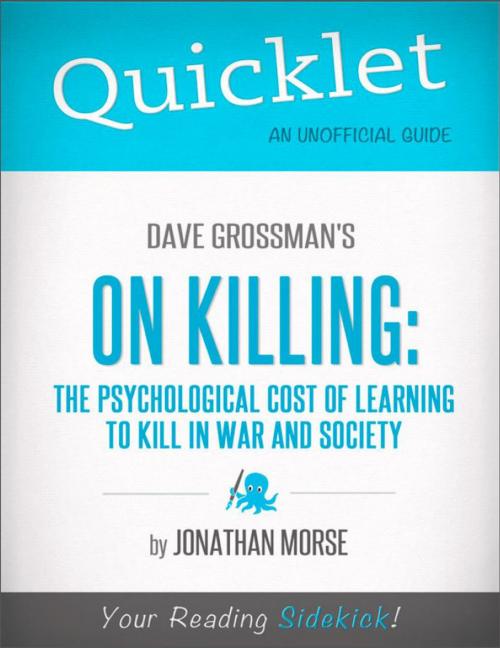Quicklet on Dave Grossman's On Killing: The Psychological Cost of Learning to Kill in War and Society
Nonfiction, Reference & Language, Study Aids, Book Notes, Art & Architecture, General Art| Author: | Jonathan Morse | ISBN: | 9781614642404 |
| Publisher: | Hyperink | Publication: | February 24, 2012 |
| Imprint: | Hyperink | Language: | English |
| Author: | Jonathan Morse |
| ISBN: | 9781614642404 |
| Publisher: | Hyperink |
| Publication: | February 24, 2012 |
| Imprint: | Hyperink |
| Language: | English |
ABOUT THE BOOK
Lt. Col. Dave Grossman’s book On Killing: The Psychological Cost of Learning to Kill in War and Society, is a soldiers account of how one person learns, right or wrong, to kill another. The Pulitzer Prize nominated work documents the mental preparations and emotional trauma born in the terror of human conflict.
The book tells the story of veterans across hundreds of years of warfare. Grossman uses his book as a vessel for the words of those who have had to kill, painting a vivid portrait of the human cost to foe and victor alike.
MEET THE AUTHOR
Jonathan has been writing independently for two years and recently graduated from Northern Illinois University with baccalaureate degrees in journalism and political science. His time is spent reading, writing or playing whatever musical instruments he can build, find or afford.
EXCERPT FROM THE BOOK
Grossman begins On Killing with an explanation of the natural human aversion to violence and killing. During WWII a US Army Brigadier General named S.L.A. Marshall began observing and questioning soldiers in the Pacific on their actual behavior in combat.
To the surprise of the US military establishment, he found that most men never fired their weapons. Approximately 15 to 20 percent of soldiers fired as expected; the rest pretended so they wouldn’t have to kill anyone (others disagree, see later section: A Controversial Influence).
These men were not cowards, in fact many were reported to take great personal risks to assist their fellow soldiers, but still they would not attack, even under fire.
Their training had taught them how to fire a gun, but not how to shoot at another human being.
Buy a copy to keep reading!
ABOUT THE BOOK
Lt. Col. Dave Grossman’s book On Killing: The Psychological Cost of Learning to Kill in War and Society, is a soldiers account of how one person learns, right or wrong, to kill another. The Pulitzer Prize nominated work documents the mental preparations and emotional trauma born in the terror of human conflict.
The book tells the story of veterans across hundreds of years of warfare. Grossman uses his book as a vessel for the words of those who have had to kill, painting a vivid portrait of the human cost to foe and victor alike.
MEET THE AUTHOR
Jonathan has been writing independently for two years and recently graduated from Northern Illinois University with baccalaureate degrees in journalism and political science. His time is spent reading, writing or playing whatever musical instruments he can build, find or afford.
EXCERPT FROM THE BOOK
Grossman begins On Killing with an explanation of the natural human aversion to violence and killing. During WWII a US Army Brigadier General named S.L.A. Marshall began observing and questioning soldiers in the Pacific on their actual behavior in combat.
To the surprise of the US military establishment, he found that most men never fired their weapons. Approximately 15 to 20 percent of soldiers fired as expected; the rest pretended so they wouldn’t have to kill anyone (others disagree, see later section: A Controversial Influence).
These men were not cowards, in fact many were reported to take great personal risks to assist their fellow soldiers, but still they would not attack, even under fire.
Their training had taught them how to fire a gun, but not how to shoot at another human being.
Buy a copy to keep reading!















